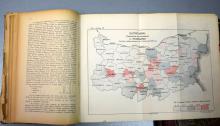For almost century and a half censuses in our country have been following all significant events in Bulgarian history. In 1880 by virtue of the Decree issued by Prince Alexander I the Statistical Department at the Ministry of Finance was established and its first task was to organize and conduct a census. On 1st January 1881 the first population census in the Principality of Bulgaria was conducted. In the young Bulgarian state at that time 2 007 919 persons lived while the average number of people per household was 6. In 1887 after the Unification the population of Bulgaria increased up to 3 154 375 persons in 556 400 households. At that time only 10% of the population was literate.
The population of Bulgaria has increased by 1985 despite the two world wars and the national catastrophes. In the 1980s, the 9 millionth Bulgarian was never born. In fact, the decrease in births started already in the 1970s due to urbanization of the country and reached its peak at the end of the 1990s. Population decrease after democratic changes was influenced also by the external migration. For 30 years transition the population has decreased with 1 570 769 persons. In 2001 for one more first time we were below 8 million.
In 2011 Bulgaria conducted the first census as an EU Member State. Then was also the first e-census in our country. The population was 7 364 570 persons as 42% of them got counted online. The average number of members per household was only 2.4 persons. In our country the greatest part were the one-member households – almost one third.
Besides population censuses other kinds of censuses were also carried out - how many centenarians, civil servants, livestock and vehicles. One of the most interesting surveys was the centenarians census in 1927 – 1928. At that time 158 centenarians lived as two of them were 111 and 112 years old. In order to find the centenarians, the enumerators travelled 18 055 km and worked 1 120 days in total. In 1904 according to the census data the civil servants were 27 939, of which the largest number worked at the Ministry of War – 6 455, and the smallest number was at the Ministry of Foreign Affairs – 224.
2020 was a crisis year for all the world due to the COVID-19 pandemic. In that year NSI registered one of the highest mortality rates in the history of the country. Data are comparable with the years of the so-called Spanish flu. At the same time, for the first time in years, higher internal migration in the urban-rural direction was registered.
The most accurate demographic data about how many we are, who we are and how we live, we will have after the national population and housing census. It starts after the celebration of the 136th anniversary of the Unification of Bulgaria, at 0:00 sharp on 7th September.



